The window of Pièce Unique, the MASSIMODECARLO gallery space in Paris, is transformed into a place of ambiguity and reflection with October 2025, the new installation by Elmgreen & Dragset. Starting Oct. 18, anyone crossing rue de Turenne will come across a scene suspended between reality and fiction: behind the gallery’s glass, a female figure appears slumped over a desk, as if caught in a sudden sleep or a moment of fatigue. The woman, a gallery assistant, is actually a hyperrealist sculpture, modeled in minute detail to evoke the uncertain boundary between life and its representation.
With October 2025, Elmgreen & Dragset continue their investigation into the roles and dynamics of the art system, bringing to the forefront what usually remains hidden. The administrative office, usually relegated to the back of the exhibition space, is moved to the showcase and staged as an integral part of the work. The large desk occupies the entire front of the gallery, while the figure of the woman, with her head resting on her arms, dominates the composition. Visible day and night, the sculpture establishes a silent dialogue with passersby, who unwittingly become spectators of an enigmatic gesture.
The scene suggests multiple interpretations. Is the woman asleep, or does she isolate herself for a few moments from the outside world? Is she exhausted from work or, on the contrary, does she consciously choose to suspend herself from her tasks, like a modern Bartleby who “would rather not”? The work, as is often the case in the duo’s work, offers no answers but invites reflection on social conventions and how we observe others. Elmgreen & Dragset construct situations that blur the boundaries between performance and sculpture, creating realistic environments that gradually reveal themselves as conceptual constructions.
The work, observable around the clock, fits into the visual continuum of the city, blending the daily rhythm with the stillness of a suspended scene. The hyperrealism of the sculpture, made with anatomical precision and attention to materials, amplifies the sense of estrangement and induces reflection on the condition of cultural work, fatigue, and the invisible presence of those who inhabit the art system.
At Pièce Unique, the transformation is subtle but radical. The architecture of the gallery remains unchanged: no additional structure or spatial modification, only the presence of a body that alters the meaning of the place. The effect is that of a short circuit between the working and artistic dimensions, between the reality of an everyday environment and the fiction that art introduces. The work thus becomes a suspended fragment of life, a gesture that questions the line between representation and authenticity.
Elmgreen & Dragset are known for their ability to subvert exhibition spaces, redefining their functions and rituals. Their practice, which combines installation, sculpture and performance, has been addressing issues of visibility, power and identity for decades. With October 2025, Pièce Unique’s storefront becomes an instrument of mutual observation: the viewer looks at the sleeping figure, but is in turn observed by the city flowing behind him. The transparency of the glass accentuates this double direction of the gaze, making each passerby part of the scene.
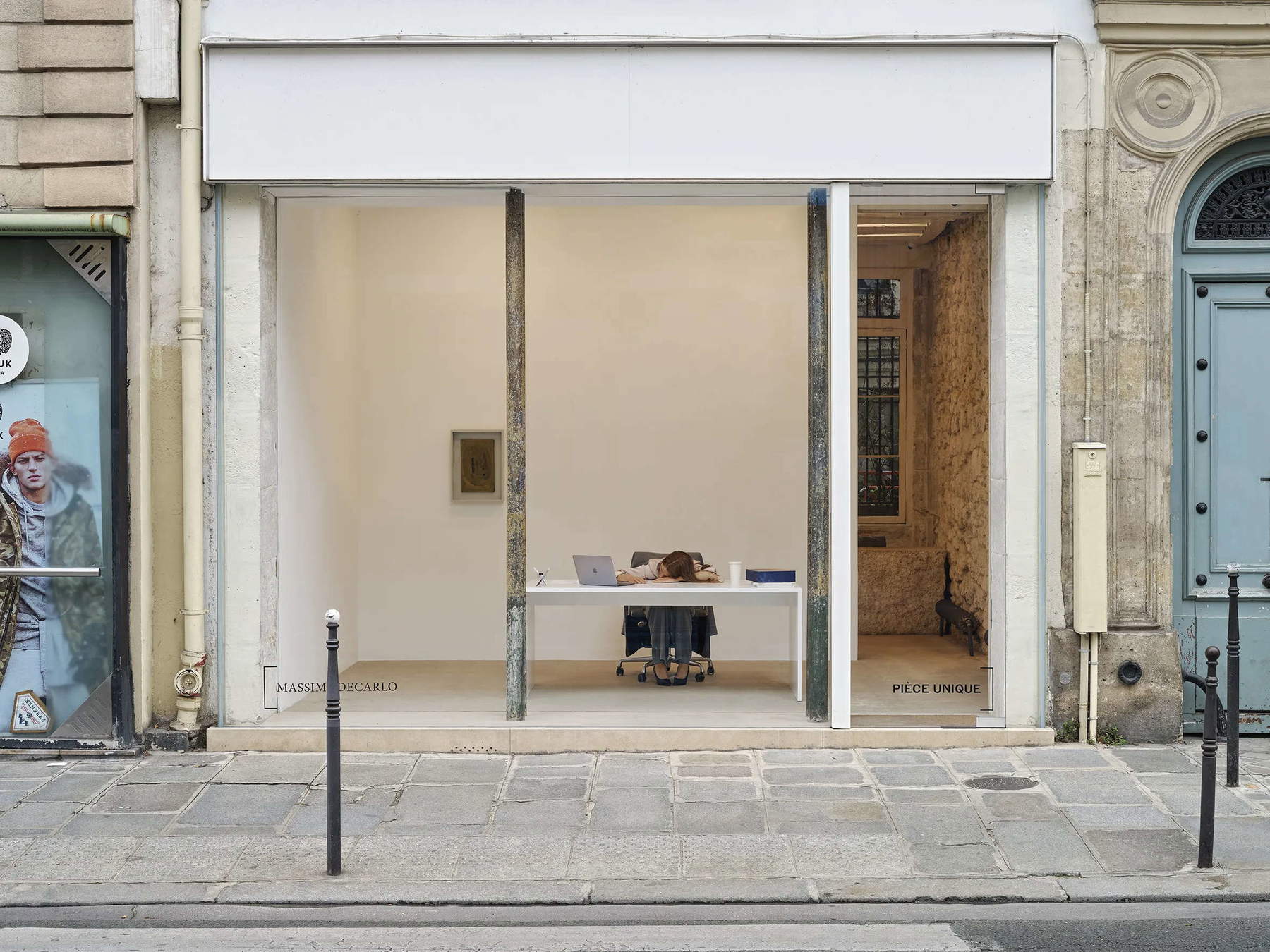
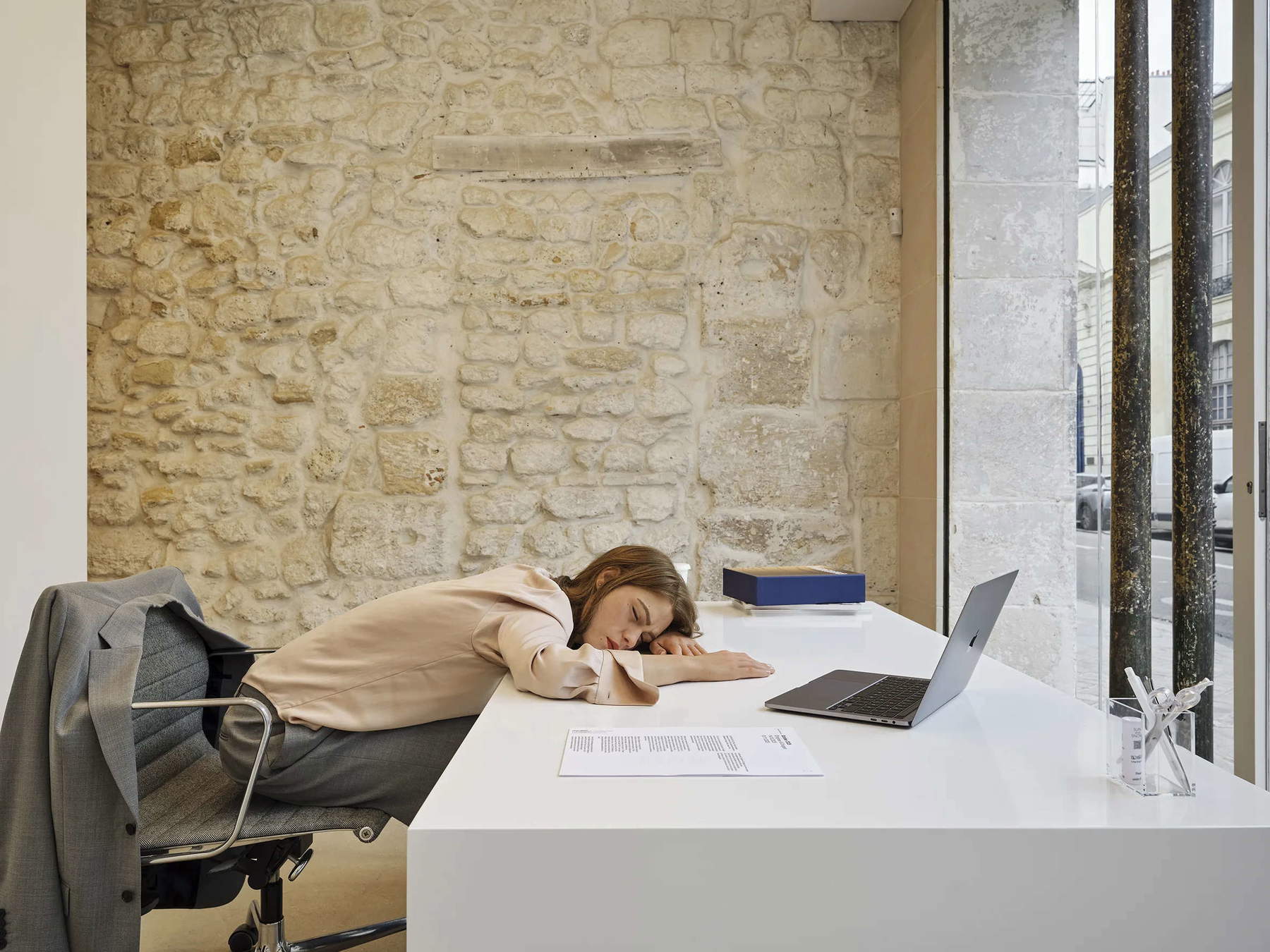
The project finds an emblematic antecedent in Prada Marfa, one of the duo’s most iconic works, created in 2005 in the Texas desert: a perfectly reconstructed but perpetually closed Prada boutique located along an isolated stretch of highway. There, too, the storefront was the point of contact between fiction and reality, an interface that suggested reflections on consumption, access, and distance. In Paris, the scale is reduced, but the conceptual mechanism remains similar: October 2025 introduces a foreign element into a familiar context, producing a moment of suspension and questioning.
The exhibition comes almost a year after L’Addition, the major exhibition that Elmgreen & Dragset presented in 2024 at the Musée d’Orsay in Paris. On that occasion, the artists had installed sculptures of contemporary male figures inside the museum’s main aisle, some of them suspended upside down from a temporary structure. The intervention, which dialogued with the museum’s permanent collection, challenged the tradition of male representation in art history, subverting the idea of heroism and vulnerability.
October 2025 continues this research on the gaze and perception, but chooses a more intimate context. If at the Musée d’Orsay the monumentality of the space suggested a collective reflection, here the device becomes domestic, almost private. The sleeping assistant becomes a threshold figure: neither heroic subject nor victim, but silent presence occupying the border between real life and the constructed image.
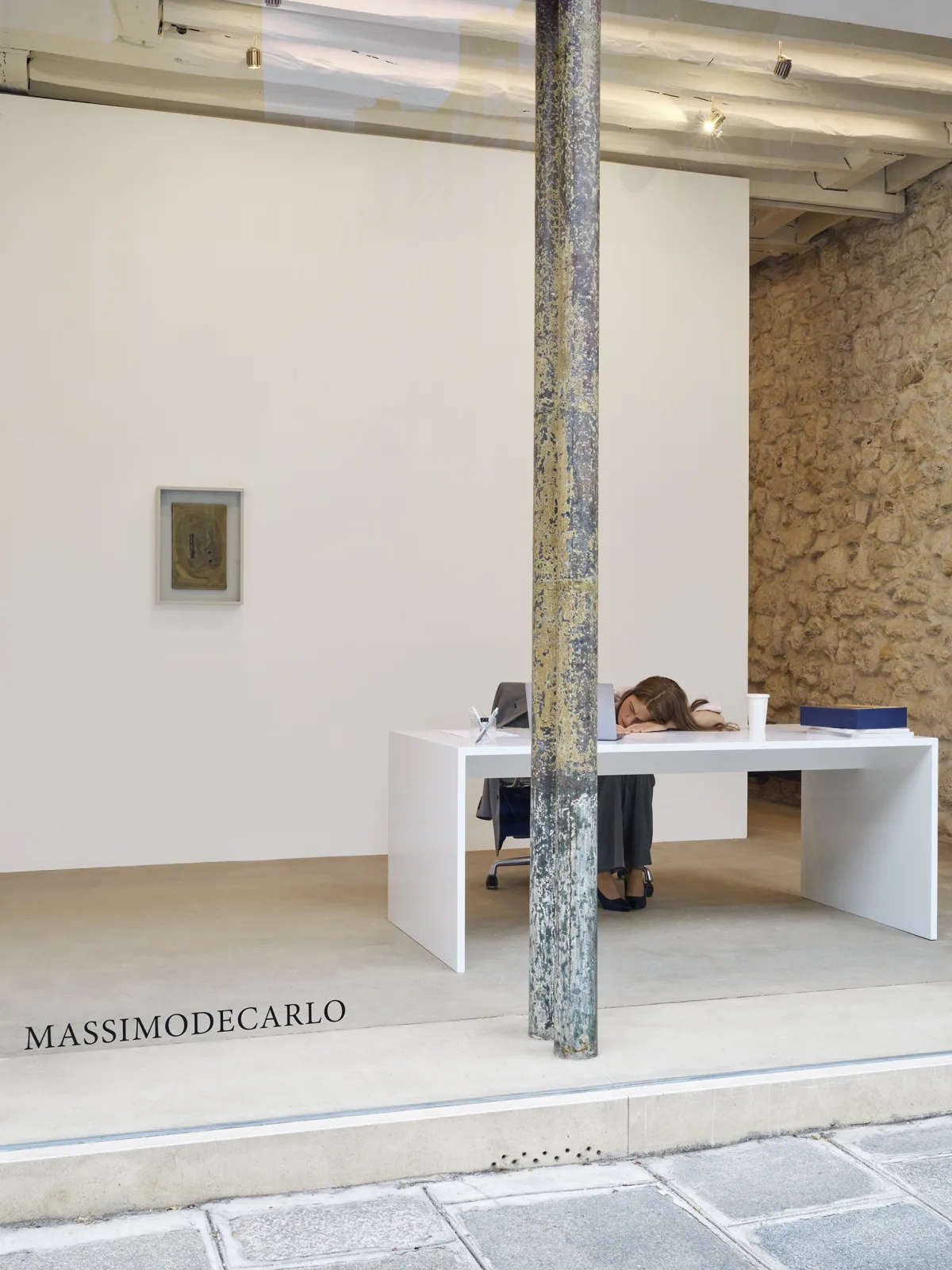
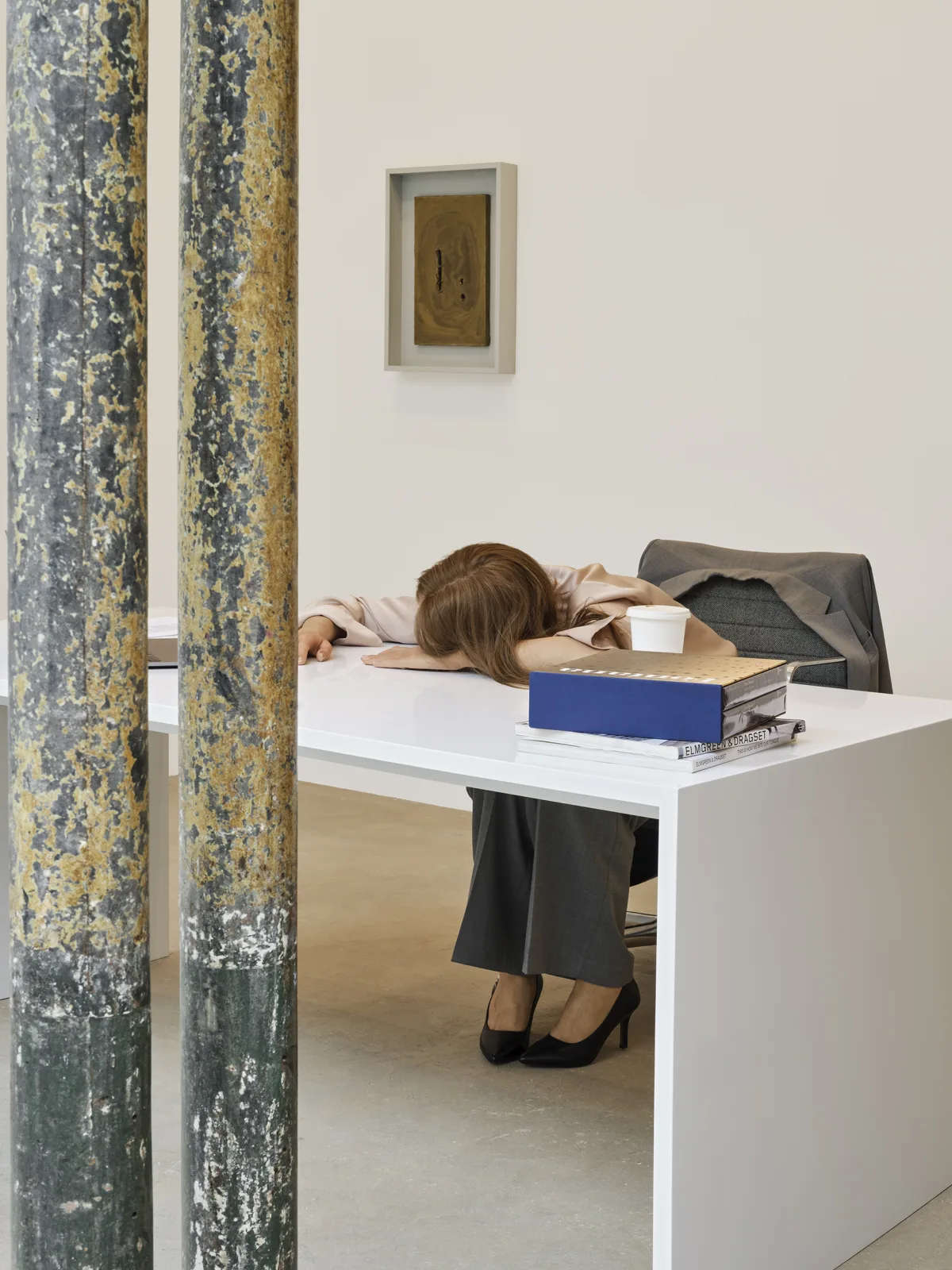
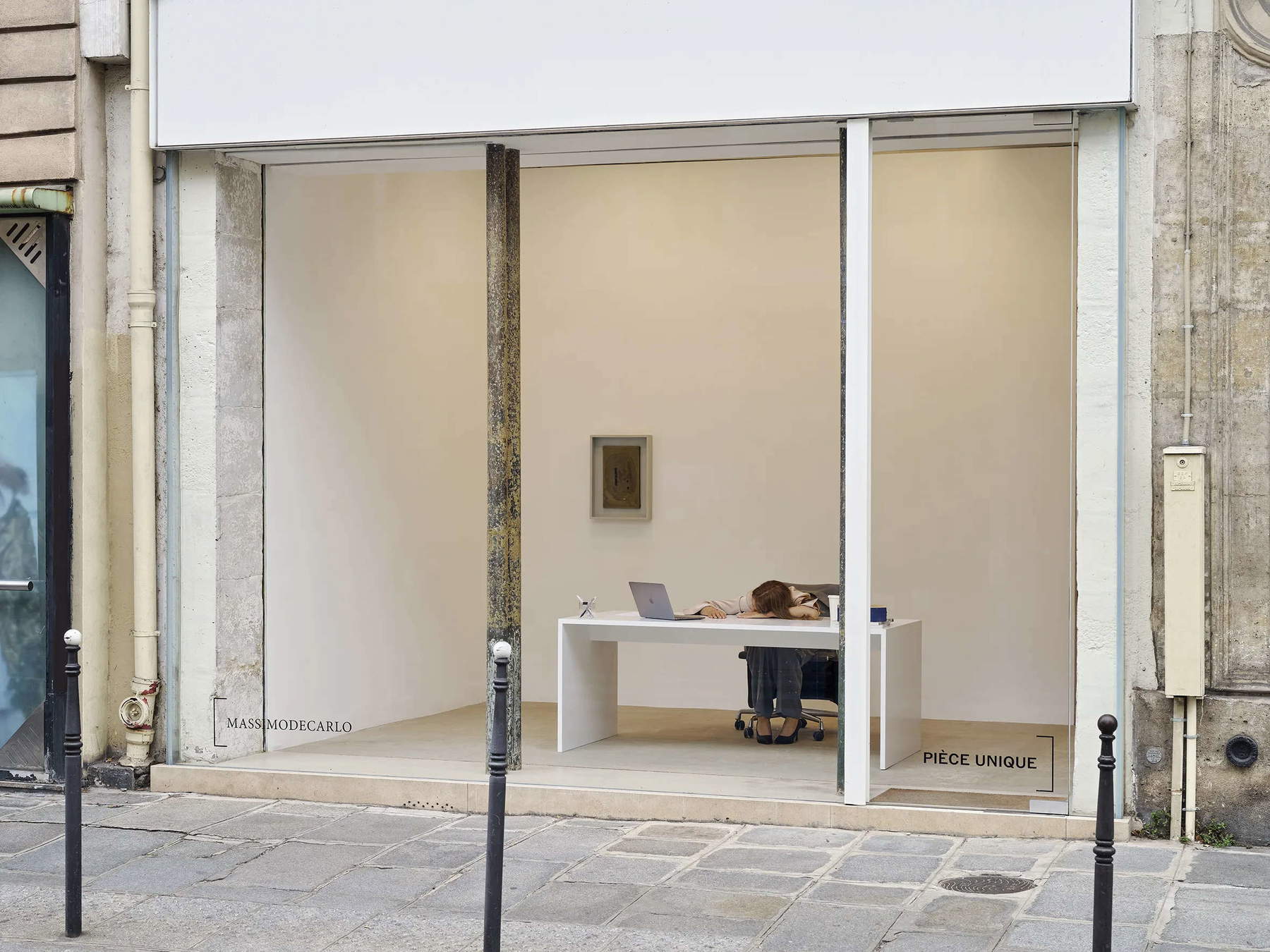
Michael Elmgreen, born in Copenhagen in 1961, and Ingar Dragset, born in Trondheim in 1969, have been collaborating since 1995 and live and work in Berlin. Throughout their careers they have redefined the way exhibition spaces can be inhabited, transforming museums and galleries into narrative settings. Their installations combine elements of architecture, design and theater to expose the invisible structures of power and representation. With irony and formal rigor, the duo addresses issues of politics, sexuality and identity, challenging the viewer to recognize their own position within the art system.
Among their best-known works, in addition to Prada Marfa, is Short Cut (2003), an intervention made together with the Fondazione Nicola Trussardi in Milan, in which two cars seemed to emerge from the floor of the Galleria Vittorio Emanuele, creating a surreal scene in the heart of the city. With these works, Elmgreen & Dragset have consolidated a poetics capable of combining the conceptual gesture with the spectacular dimension, while always maintaining a critical subtext toward contemporary social and cultural dynamics.
The duo has exhibited in the world’s most important museums and biennials, including the Venice Biennale, where in 2009 they received a special mention for their project “The Collectors,” presented jointly in the Danish and Nordic pavilions. In 2002 they won the “Preis der Nationalgalerie für Junge Kunst” at the Hamburger Bahnhof in Berlin, and in 2017 they were curators of the 15th Istanbul Biennale.
 |
| In Paris, Elmgreen & Dragset upend art world conventions with new work |
Warning: the translation into English of the original Italian article was created using automatic tools. We undertake to review all articles, but we do not guarantee the total absence of inaccuracies in the translation due to the program. You can find the original by clicking on the ITA button. If you find any mistake,please contact us.